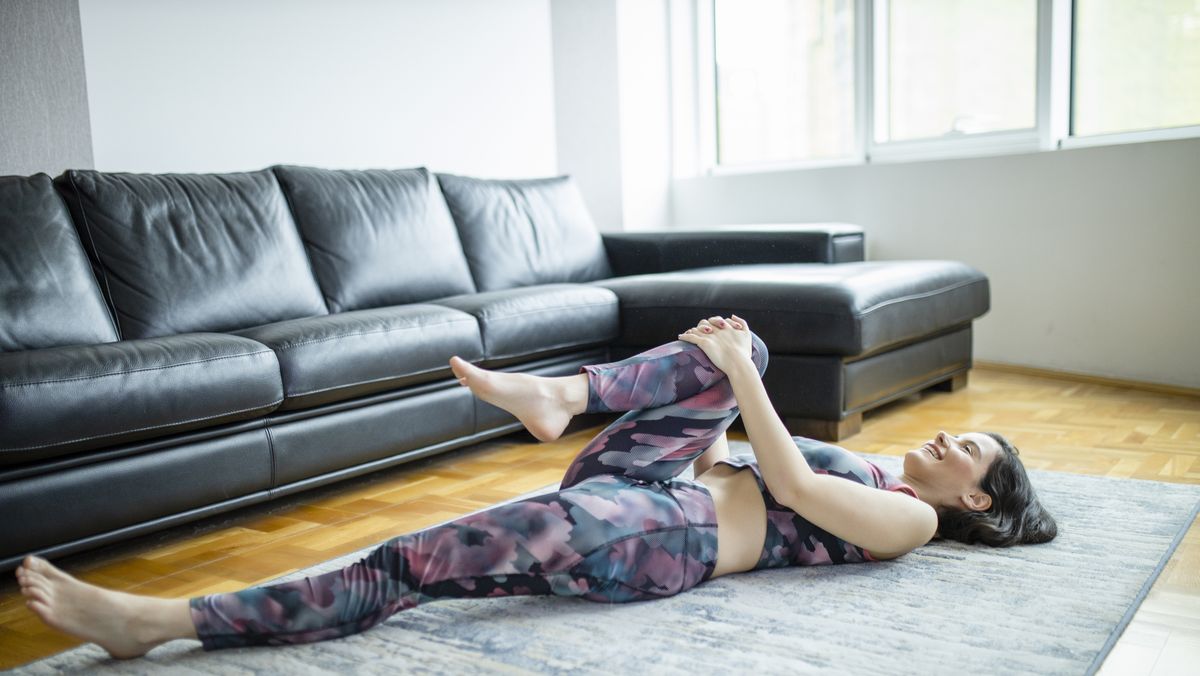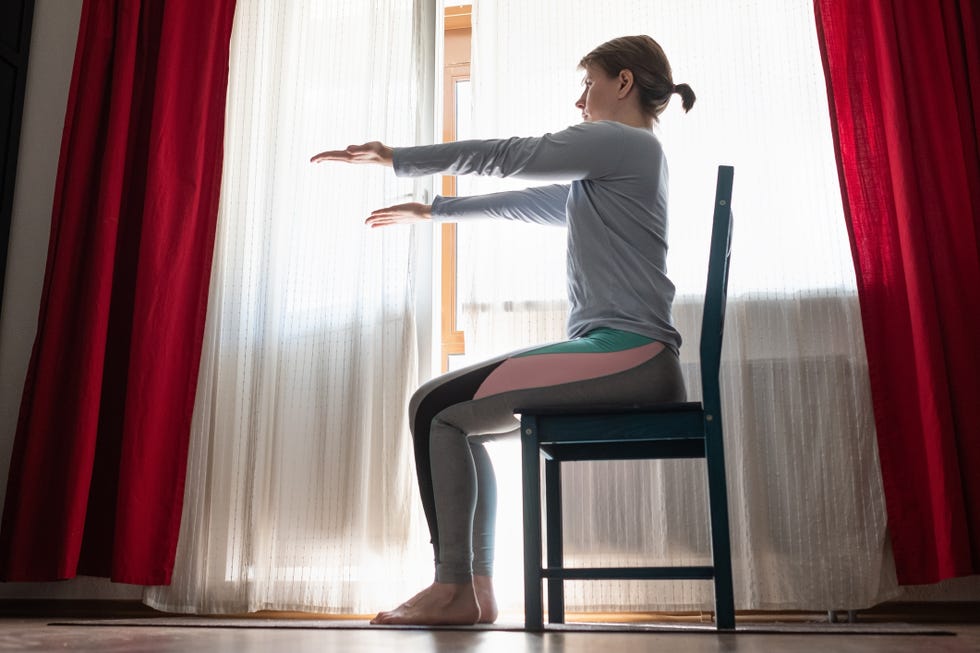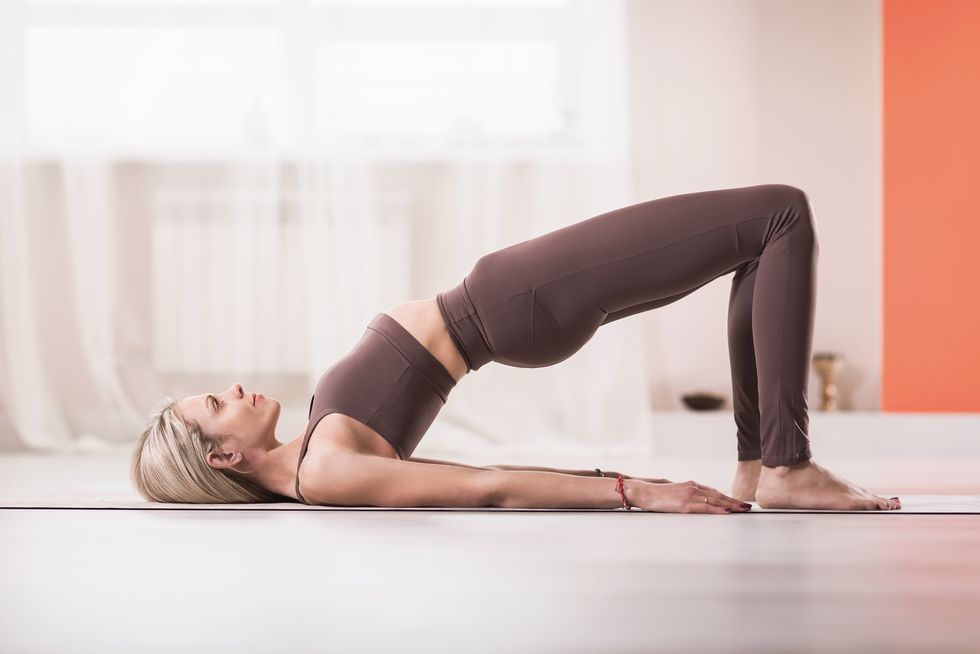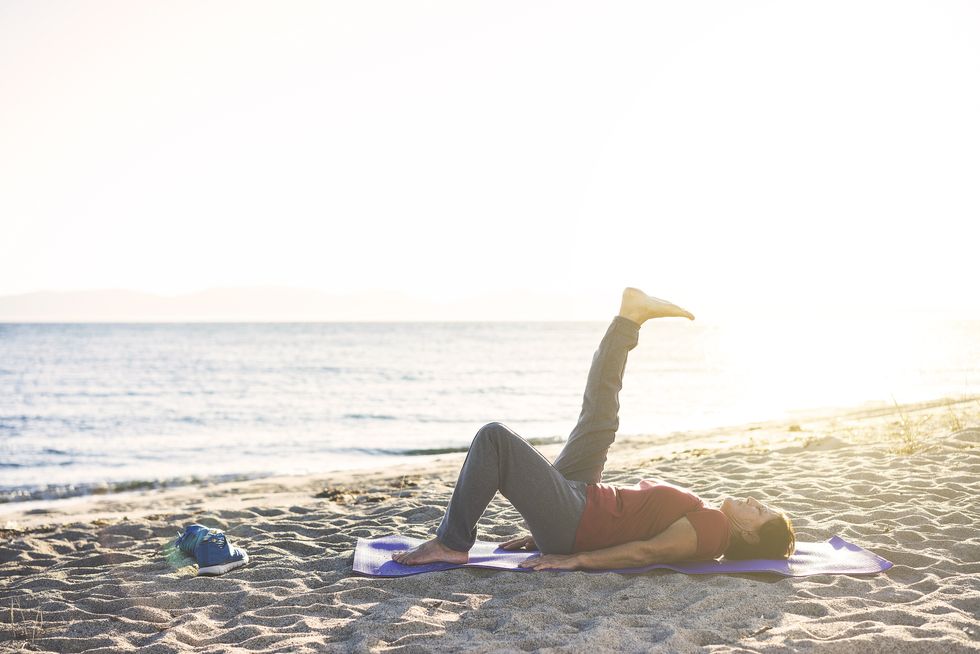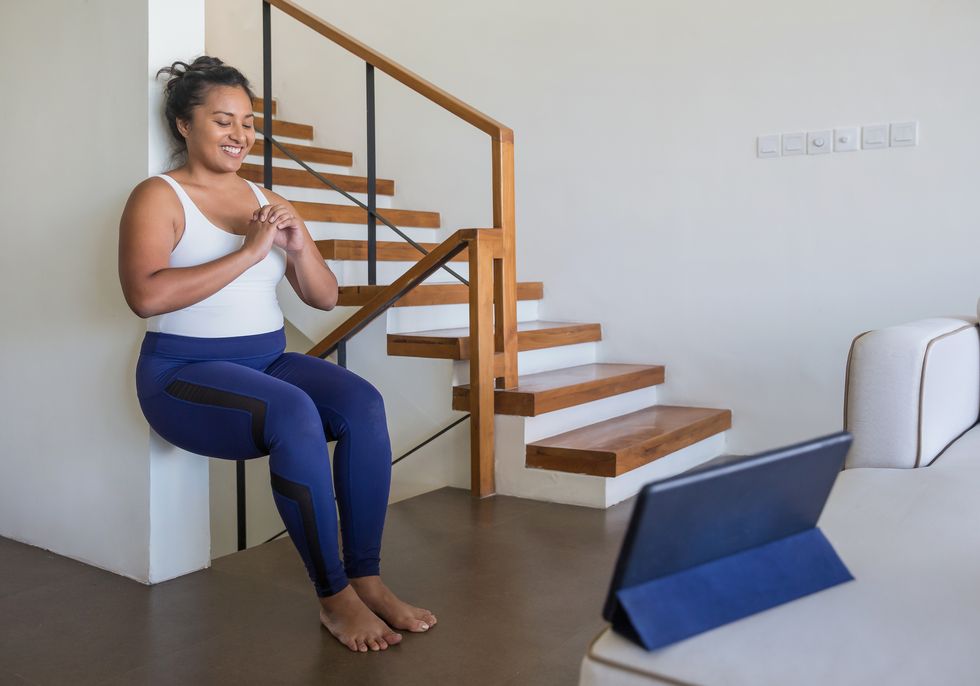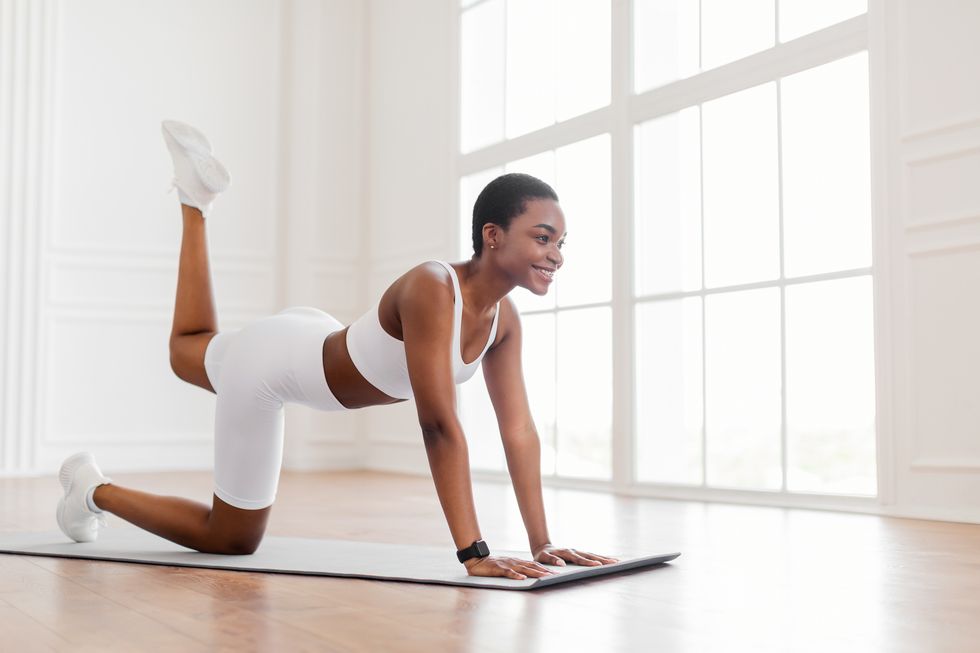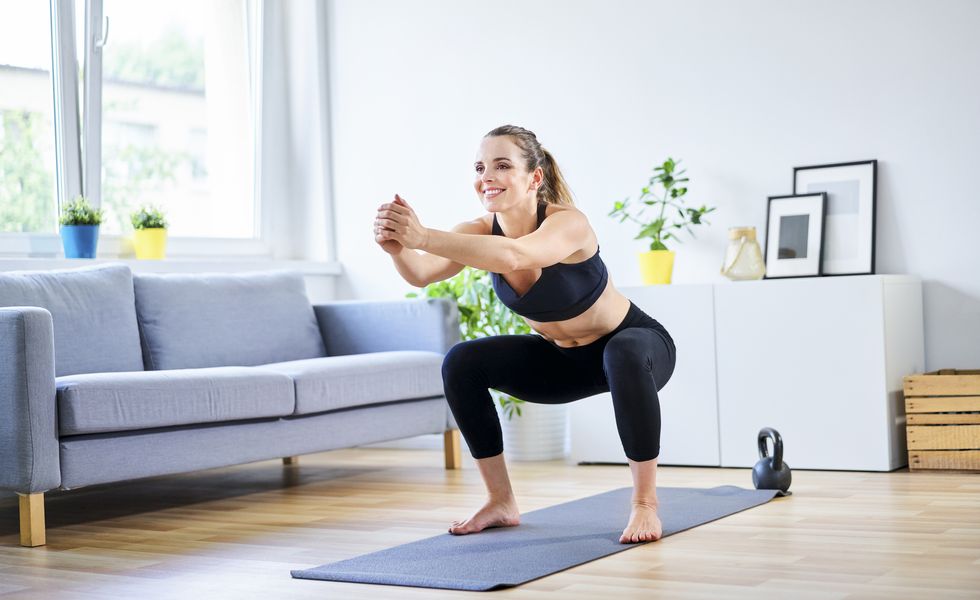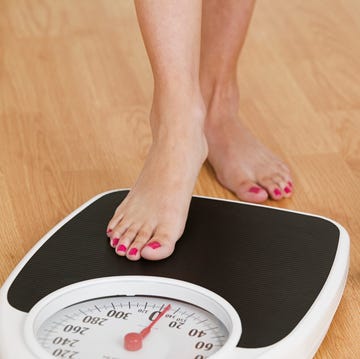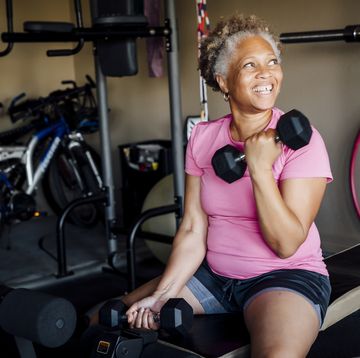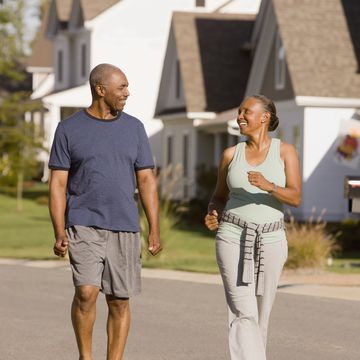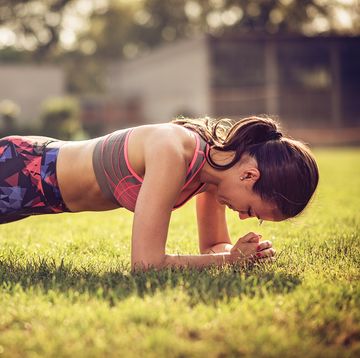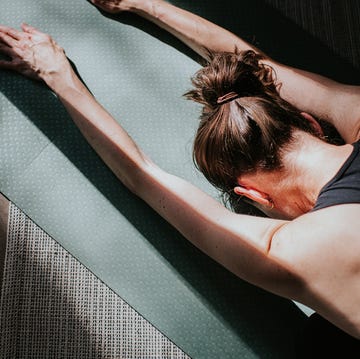If there’s one part of your body that needs more love as you age, it’s your knees. These joints are crucial since they bear most of the weight in your body and are a critical component in the simplest daily activities such as walking, going up stairs, and even sitting down and standing up—so you’ll notice if they start to give out on you. That’s why incorporating knee-strengthening exercises is so important as you get older.
“While you can’t completely stop some of the natural effects of aging or medical conditions (such as arthritis, which can affect the knee joint by wearing away the cartilage in the knee), weak knees are often the result of mechanical issues, such as improper form during exercise or injuries that have affected the way you move day-to-day,” says Thavun Srisaneha, I.S.S.A. C.P.T., N.A.S.M. B.C.E., a certified personal trainer and group fitness instructor at Thavun S Fitness.
“Neglecting proper knee care can lead to more imbalances that may cause other parts of your body to hurt due to overcompensation,” says Srisaneha.
To get started, especially if you are currently experiencing pain, Srisaneha recommends consulting a professional first, such as a physical therapist. They can assess your unique body movements and current conditions or injuries to create an action plan that will get to the root of your issue.
Once you have some expert insight and feel comfortable doing exercises at home, consider adding the knee strengthening exercises below into your routine—they’ll help you perform better in the gym and keep you moving strongly in your daily life. But first, make sure you spend 5 to 10 minutes warming up. The American Academy of Orthopaedic Surgeons recommends kicking things off with a low-impact activity, such as walking or biking on a stationary bike, before you begin.
1. Butt kickers
Why it works: This exercise can be a good warm-up for any of the exercises listed below because it gets the knee joint moving and loosened up before you perform exercises and could help prevent injuries.
How to do it: Stand next to a wall if you need something to hold on to for balance, stand up straight, and try to kick your butt with your heel. Do 20 kicks on each side alternating for two rounds, take a 30 to 45s rest in between sets.
2. Sitting down and standing up
Why it works: This exercise can be done anywhere, where you have a bench or chair. This exercise is one I love because its something we do every day from sitting up from a work desk or even a couch, this exercise works a combination of muscle groups like your quadriceps, hamstrings, and glutes when you’re sitting down, and even your core comes in to play to stabilize your body.
How to do it: Using a bench or chair, slowly come down to sitting position with your arms to your side and raising up as you sit for stability. Then, slowly stand up, squeezing your glutes when you reach the top. While coming down, it’s very important to focus on sitting down slowly because it allows you to focus more on the muscles being worked. You can also increase your risk of injury by speeding to the bottom of the movement. Modify the movement by finding a slightly higher bench or chair so that you don't have to go down as low. Perform 3 sets of 15 reps of this exercise.
3. Glute bridges
Why it works: Glute bridges are helpful because it strengthens the glutes, which is important for good knee health. Strong glutes help take the stress off the knee by taking on some of the load and preventing your knees from moving in a direction they aren’t supposed to go in, such as caving in or twisting out.
How to do it: Lay on your back with your knees comfortably bent and the bottoms of your feet against the ground, right inside shoulder width. From there, lift your glutes off the ground and squeeze them at the top, in a slow and controlled manner, focusing on contracting the glutes at the top. Perform 3 sets of 15 reps of this exercise.
4. Hamstring stretch
Why it works: This exercise works your core and hip flexors. Strengthening your core and hip flexors can help your posture as well as stabilize your spine so that you can move in the way your body was meant to move.
How to do it: Lay on your back with one knee bent and one leg straight. Your arms can be rested at your side. Then, raise your straight leg up to 90 degrees, and slowly back down. Perform 3 sets of 15 reps of this exercise for each leg.
5. Wall sit
Why it works: Wall sits are a great exercise to strengthen your quadriceps, which play an important role in absorbing shock from daily activities such as running, jumping, or even walking.
How to do it: Find a wall and put your back flush to the wall with your arms at your side. Slide down, bending your knees no more than 90 degrees. The closer to 90 degrees you go, the more challenging it will be. Find your sweet spot based on your current level of strength and hold a sitting position for 30 seconds to 1 minute. It is important to note that your knees should never go over your toes, and your shins should be as perpendicular to the ground as possible. Perform 3 sets of this exercise.
6. Donkey kicks
Why it works: Like glute bridges, this exercise helps strengthen your glutes and is a very low-impact movement.
How to do it: Grab a mat or find a soft surface, like a cushioned carpet, and get on your hands and knees. From there, you want a 90-degree angle at your hip and knee joints. Kick one leg back while keeping the 90-degree bend in the knee. Your belly button should be pointing to the floor so you don’t twist at all. You should feel a squeeze in your glute. Return to your starting position and repeat this for 3 sets of 10 to 15 reps each leg with 30 to 45 seconds of rest in between each set.
7. Squat
Why it works: “Squats strengthen the quadriceps muscles which directly connect to the knee,” says Dean Seda, N.A.S.M., a certified personal trainer who specializes in corrective exercise. Quadriceps strength helps provide the knee with more stability, thus reducing and preventing injury.
How to do it: Stand with your feet about hip-width apart. Keep your spine straight and look straight ahead. Lower your hips until you get to about 90 degrees (legs at right angles). Press through your heels and return to a standing position.
8. Leg extension
Why it works: Like squats, this exercise also strengthens the quadriceps muscles which attach to the knee. “The hamstring muscles along the back of your legs will experience a nice stretch as the quadriceps contract,” says Seda. “This promotes flexibility in the hamstrings which helps to reduce or prevent knee injury.”
How to do it: This can be done with or without weight. Sit in a chair or on the edge of a table that allows your calves and feet to dangle over the floor (legs in a 90-degree, flexed position). From here, raise your legs with flexed feet until your legs are straight, and then lower them back to the starting position.
Lulu Chang is a freelance writer whose work has appeared on Business Insider, Digital Trends, PureWow, Well+Good, and Bustle. She’s a displaced Texan currently braving the cold (and sometimes the heat) in New York City. A lifelong pianist, she loves all things art (though her own artistic talents end at the piano). She is an avid kick boxer and kitten enthusiast.
